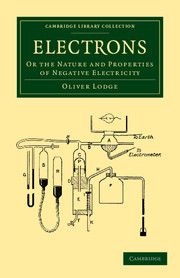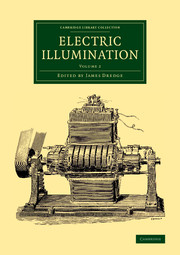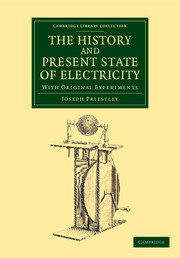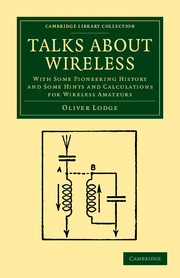Electrons
The discovery in 1897 of the electron, the first subatomic particle, led to rapid advances in our knowledge of atomic structure, the solid state, radioactivity and chemistry. It also raised major questions. Was the electron point-like or did it have structure? Was there a positive electron? What did the positive part of the atom look like? Did a hydrogen atom have one electron or a thousand? Published in 1906, this expository account by leading physicist Sir Oliver Lodge (1851–1940) examines the spectacular phenomena of cathode rays in evacuated tubes, the fixed units of charge observed in electrolysis, and the puzzling regularities in atomic spectra. Lodge knew most of the pioneers in the field, and his enthusiastic descriptions of their work and clear analyses of the problems as well as successes paint a vivid picture of the excitement of cutting-edge research and the scientific process in action.
Product details
July 2012Paperback
9781108052146
252 pages
216 × 140 × 15 mm
0.33kg
26 b/w illus.
Available
Table of Contents
- 1. Properties on an electric charge
- 2. Electric inertia
- 3. Foreshadowing of the atom or indivisible unit of electricity
- 4. Foreshadowing of the electron
- 5. Determination of speed and electrochemical equivalent of cathode rays
- 6. Determination of electrochemical equivalent in the case of electric leakage in ultra-violet light
- 7. Ionisation of gases
- 8. Determination of the mass of an electron
- 9. Further details concerning electrons and ions
- 10. The electron theory of conduction and of radiation
- 11. Further discussion of the electron theory of the magnetisation of light and determination of the m/e ratio in radiation
- 12. Increase of inertia due to very rapid motion
- 13. Justification for electric theory of inertia
- 14. More advanced development of the combined electric and magnetic deflexion method for measuring velocity and mass of the particles in compound rays
- 15. Electric view of matter
- 16. Electric view of matter (continued)
- 17. Further considerations regarding the structure of an atom
- 18. Summary of other consequences of electron theory
- 19. Radiation from a ring of electrons, and its bearing on the constitution of an atom
- 20. Difficulties connected with the electric theory of matter
- 21. Validity of old views of electrical phenomena
- Appendices.






